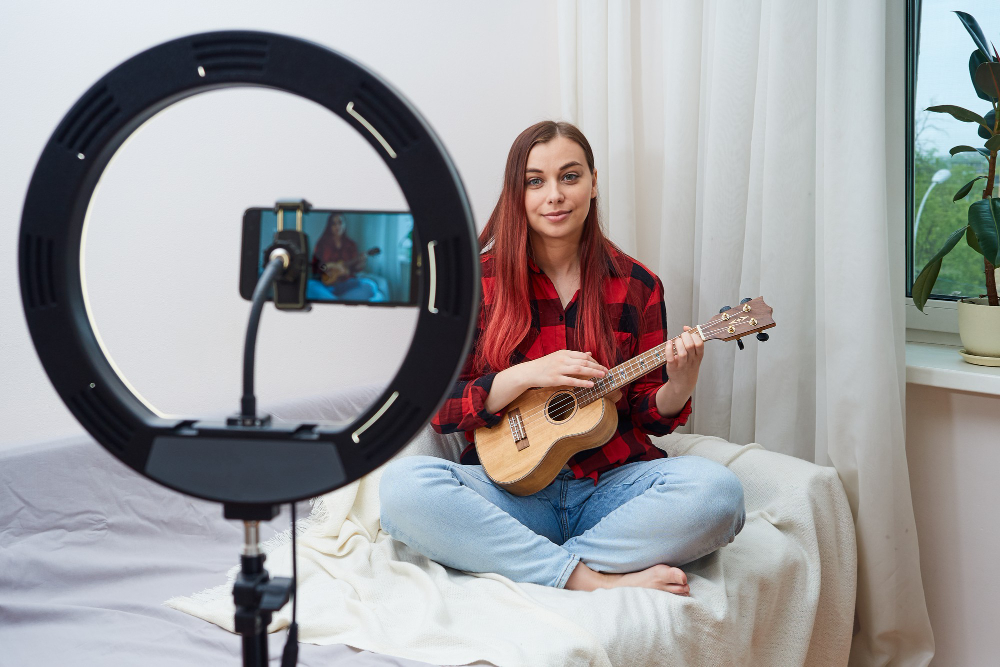Web traffic is money. And when it comes to views on videos or live streams, social proof is a valuable commodity. Influencers are eager to rack up those views or subscribers and get as many impressions as they can… And this has resulted in a booming industry for fake views.
Where do these fake views come from?
View bots.
These bots can be hired for relatively little money to boost the viewing figures on any video channel, from YouTube or Instagram to Twitch or TikTok.
What are view bots?
View bots, as the name suggests, are bots programmed to watch videos to inflate viewer count numbers. They can be used on virtually any platform where video is played or even on music streaming sites.
A view bot doesn’t just view whatever activity is occurring on the screen at any time. It also views media such as banner ads, pre or post-roll video ads, and other paid elements.
This form of a bot is relatively complex, as its goal is to avoid being detected by sophisticated filters on video platforms.
There’s a high demand for these bots, which is why they are easy to find and are widely used. When searching for ‘view bots,’ there are hundreds of results on the organic search pages.
And, yes, if you’re wondering whether view botting is against the TOS (Terms of Service), it is, but this doesn’t stop people from buying these very affordable bot packages. In fact, many of them offer free trials, so you don’t even need to pay to inflate your views.
Why do people use view bots?
The biggest objective of any YouTube or Twitch creator is to get more views. The more views they get, the more money they make, and that’s all the motivation they need to use view bots.
And this is where many people saw an opportunity, making it easy for creators to purchase a YouTube, or a Twitch view bot. There are even Facebook live view bots that can drastically increase viewer numbers on live videos on Facebook.
Newbie creators on video platforms are particularly susceptible to using them as they look to grow their subscriber base and convince the algorithms to show more people their videos.
It also doesn’t hurt them that a view bot isn’t difficult to set up. You can find websites like ViewerLabs and UseViral that walk you through setting up a view bot for your YouTube channel. Many are quite affordable (UseViral offers 10,000 views for a little over $100).
Although most of us think of social media sites like TikTok, YouTube, or Twitch, there are also other view-based sites such as esports platforms where you can unleash a view bot.
And as this form of online entertainment is increasingly popular with younger audiences, marketers are looking to streaming services or even metaverse games to run their ad campaigns.
How do view bots affect advertisers?
Perhaps the most obvious impact for advertisers is in cost-per-mile (CPM) advertising. If you’re paying per 1000 impressions, and around 15-20% of those impressions are fake, you’re leaking money.
Referred to as both click fraud and ad fraud (although the two terms mean slightly different things), the impact on the global marketing industry is estimated at around $40 billion each year and growing.
Impression fraud also means your ad spend is exhausted faster, often meaning you’re missing out on genuine ad opportunities.
Another issue is that the inflated view metrics skew your ad data, effectively making your video ads or banner ads seem more successful than they are.
And in an age of influencer marketing, embellished videos and stream views also artificially inflate the value of an influencer. When you consider that the definition of an influencer is someone with a few thousand followers and that those followers could cost someone just a few hundred bucks, the cost of this deception to marketers can mount up.
Would you be happy paying your ad budget to target an audience of click farm robots?
Read this guide to understand how you can protect your marketing efforts from fraudulent bots.
Types of view bots
‘View bot’ is a blanket term for a wide range of bots that are programmed to help inflate video metrics. Most obviously, these bots click on videos and raise the view count. But they can do other things as well.
Live stream bots
Some vIew bots can also hop on Twitch and Facebook live streams to make it seem like the streamer has a wider audience base. The goal here is to draw in more people to join the stream. Streaming farms are becoming increasingly popular as a way to artificially inflate the number of viewers or listeners on live streams.
Chats and engagement bots
People see through views without engagement pretty easily, so many YouTube view bots have been programmed to engage as well. However, the engagements are flat and, well, unengaging. You’ll usually see this with Instagram and Facebook comments too. We’ll talk more about these in a bit.
Engagement groups
Although these aren’t view bots in the traditional sense, engagement groups act as a sort of human view bot.
Instead of getting a YouTube view bot that is prohibited by the TOS, creators often sign up with communities where they watch and engage with each other’s videos. For creators, they get the metrics of more views and comments.
But for advertisers, this is non-genuine human traffic with a very low chance of converting. And to add to this, engagement groups may also click on ads within videos, blogs, or other content to inflate the payout for the creator. In short, they commit click fraud.
What is click fraud? Learn more in our guide…
Chat impersonation bots
Another form of view bot, chat impersonation, is often presented as a way to ‘prank’ your friends on their live streams. But, of course, these bots are often bought to increase engagement on live streams or videos.
Like other forms of view bots, these chat impersonators also affect ad impressions and distort view metrics.
Creators risk a lot by using view bots
Fraudulently inflating your engagement is against the terms of service on all of the major platforms, including YouTube, Twitch, TikTok, and Meta (Facebook/Instagram). Content creators who are caught run the risk of:
- Getting their videos taken down
- Losing the ability to monetize their content
- Being banned from the platform altogether
Twitch takes an aggressive approach against view botting. Besides banning creators, the platform has a history of suing bot creators.
For example, In 2018, Twitch won a $1.37 million lawsuit against Michael and Katherine Anjomi, creators of a view bot.

Trust issues
Bots on YouTube and other platforms don’t just rob advertisers of their ad revenue; they also make a fool out of real users. Many people follow creators online because of the social proof that thousands of others enjoy their content.
When these creators get busted, they don’t just lose their videos; they often lose the trust of their subscriber base.
Take Pink Sparkles, a Twitch streamer who got banned after mistakenly flashing her bot software on-screen during a Twitch stream. This, in addition to other violations, earned her an instant ban from the platform.
Meanwhile, on Instagram, around half of all influencers on the platform are knowingly engaging in forms of fraud, such as buying subscribers and viewers.
And when an influencer is discovered to be using fake followers or bots, it can seriously damage their status.
Amongst all these, there are several ways you can spot a fake profile and a view bot on social media.

How can you spot a view bot account?
Here are three quick ways to identify a profile with view bots on any platform.
1. Low chat with high views
These are the biggest giveaways that someone doesn’t have real views. The average view-to-chat ratio varies between platforms and the kind of content being shared. However, a video with thousands of views and a few dozen comments usually means one of two things: the video is promoted, or the profile uses view bots.
2. Generic comments
We mentioned this earlier. Some sophisticated and higher-priced view bots will also engage with comments. However, the comments are prescripted, generic, and usually appear repeatedly.
Look out for comments that require zero thought and seem to appear regularly. Typical examples include:
- I love your stream
- Awesome
- This looks great
3. Low subscribers
A realistic YouTube subscriber/view ratio is 8-12%. That means accounts with 10,000 subscribers can expect 800 to 1,200 views per video. Of course, these numbers will fluctuate, but when you start to see 7,000 consistent views on a channel with 10,000 subscribers, you know it’s not just real viewers.
What can you do about view bots?
If you advertise on any video-based platform, the chances are that your ads are exposed to view bots in some capacity.
Considering that between 40-50% of all internet traffic is non-human, this presents a major headache for marketing budgets. And yes, although platforms such as YouTube and Twitch do use filters to block bots on their sites, the truth is a large amount of non-human traffic still gets through.
Research from ClickCease shows that an average of 14% of all Google Ads clicks are non-genuine. Even on Facebook and Instagram, fake profiles (including view bots) are responsible for a big slice of the ad spend.
ClickCease’s industry-leading fraud prevention software blocks bots, including view bots, on your Facebook, Instagram, and YouTube ad campaigns. Whether you’re running pre-roll or post-roll video ads, paying for display ads on YouTube, or any other form of video marketing, blocking bots can save your ad campaign.
Sign up for a free trial of ClickCease to run an audit on your ads.
FAQs:
What is viewbotting on Twitch?
Viewbotting on Twitch is the practice of artificially boosting a streamer’s viewer count through the use of automated bots. These bots are fake accounts created to simulate human-like views on live streams on the platform.
The primary motivation behind viewbotting is to create a false perception of popularity and success, potentially attracting more genuine viewers, followers, and sponsors.
Is viewbotting illegal?
Viewbotting is against the terms of service of most video and streaming platforms, but it is not illegal in most jurisdictions. However, viewbotting can have significant consequences for streamers who engage in it. Any account caught using viewbots is subject to suspension or termination.
While viewbotting is not currently illegal in most jurisdictions, it is a form of fraud, as it can be used to mislead advertisers and viewers. For example, a streamer who uses view bots may be able to get more sponsorship deals or donations from viewers who believe that the streamer has a large audience.
